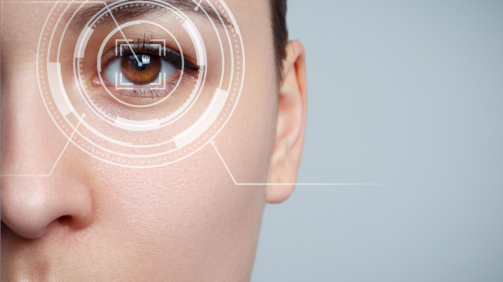Iris recognition is a biometric identification and authentication system that uses iris patterns. The system scans the eye of a person and checks for nearly 240 features and patterns in the iris. This is stored on a database, so it can be used for subsequent identification and authentication.
Bahaa Abdul Hadi pointed out that Iris recognition was once a niche technology, but has today become mainstream. It is being used in many countries as an alternative to fingerprint recognition. It is also being used increasingly in border control and by law enforcement agencies.
How it works?
Bahaa Adbul Hadi explains how Iris recognition has become a mainstream technology for identification and authentication.
The iris in the eye is a muscle that controls how much light can fall on the retina. The iris also determines the eye color. It is possible to use iris recognition because of its uniqueness. Every person has a unique iris pattern that is distinct and is virtually impossible to replicate.
This had made iris recognition valuable in biometrics. This is because iris recognition works even for even blind people, people who have had eye surgeries done, and people who use contact lenses or glasses. While fingerprint identification becomes a problem for aged people, iris recognition doesn’t pose this problem.
Further, iris recognition is almost impossible to spoof. This makes it more secure and is preferred by agencies for identification and authentication.
A problem initially was that iris recognition required that the scanner should be placed at a very close range (less than 1 meter). Technological advances have now made it possible to recognize the iris even 10 meters at a distance. A photograph from even a live surveillance feed can be used to recognize a person based on the iris pattern.
Iris recognition in practice
Iris patterns are captured by taking an image using an infrared camera. The image is then converted to a pattern using software and stored on the database. The next time the person’s image is taken, the software compares the pattern with the one of the database. This allows for seamless authentication.
While fingerprint authentication takes some time, iris recognition happens faster. This makes it more convenient. It is also contactless. This is why organizations in the private as well as public spaces have started using iris recognition for various purposes.
- In some countries like South Korea & Qatar, banks are using iris recognition to identify customers.
- Public transit systems in many countries are using iris recognition for authentication.
- There are stores that allow payments to be done based on iris recognition technology.
- Police and other enforcement agencies find iris recognition helpful in their operations.
While iris recognition remains a robust system, there are privacy and mass surveillance concern that authorities need to look into. Thank you for your interest in Bahaa Abdul Hadi blogs. Please visit www.bahaaabdulhadi.com for more articles.







